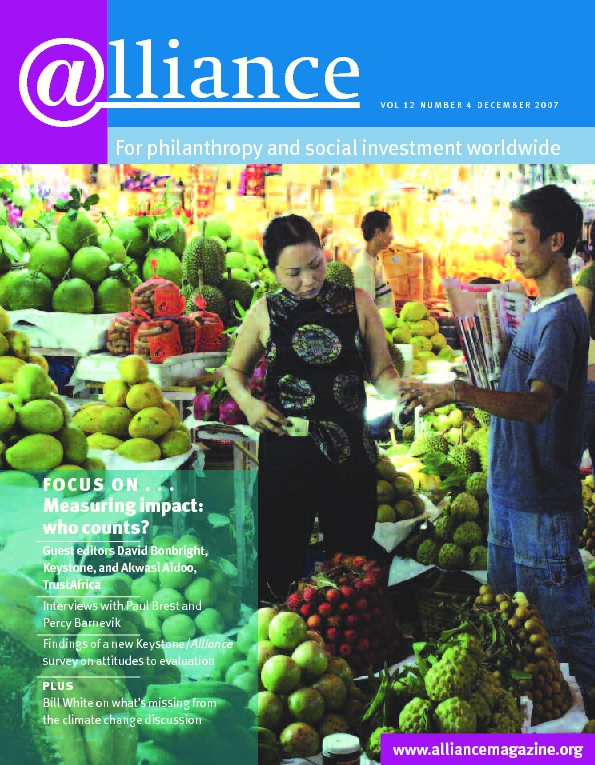I am sad to announce that the death knoll for charity having any place in philanthropy has been sounded. There are now an increasing number of books and articles that herald and champion the move away from charity to something usually labelled development philanthropy or strategic philanthropy. In addition, social entrepreneurship, social enterprise and venture philanthropy all have a purposive methodology that is often thought to be missing in charity.
Establishing benchmarks, measuring output, and increasing impact also doesn’t seem to be in the purview of charity. Finally, the give-while-you-live movement suggests that we can solve most problems in a reasonable period of time if we throw all our resources at the problem rather than saving for a rainy day, thereby diminishing the need for charity.
Now, what’s wrong with this picture besides the fact that I’ve used the questionable technique of setting up a straw man so I could attack the demise of charity? There are many things wrong, but let me mention just three. The first is that it creates a notion that there is a linear progression from charity to strategic philanthropy. That is, most philanthropic organizations either are, or need to be, climbing the steps of this ladder. In the United States this means that you relegate about 65,000 of the approximately 70,000 foundations to the charity side of the continuum.
While being small does not necessarily put you on the charity side of the continuum, there certainly is a correlation given the fact that less than US 5,000 foundations are staffed. My guess is that the real picture of philanthropy globally is of many, many small philanthropic organizations and a very few large philanthropic organizations. So why would we create a mindset of what the gold standard is when it relegates the vast majority of institutions to a point lower on the philanthropic food chain?
The second concern about a linear progression or continuum is that it tends to deny that professional and creative efforts are just as likely to emanate from charity as from strategic philanthropy. While it is quite fair to describe charity as dealing with symptoms rather than causes, there is no reason that it cannot do so professionally and creatively. The many international private organizations engaged in disaster relief efforts are almost always, as first responders, dealing with immediate needs and alleviating symptoms, if you will. Yet they have developed a professionalism in this endeavour over the years that often surpasses the effectiveness of public sector agencies.
Examples of creative charity are also plentiful. Let me mention one of my favourites – DC Central Kitchen. Each week in Washington DC, various embassies as well as international and national organizations hold gala events where much food is served and little consumed. DC Central Kitchen takes this food, repackages it, and serves thousands of meals each day to the hungry. While the organization has moved beyond collecting and repackaging food, who could argue with the fact that the initial idea was extremely creative?
A final concern I have has to do with language. We simply have no language that adequately describes charity. Because of this, it is essentially thought of as ‘unstrategic,’ a pejorative label at best. And yet, as I have argued in a previous Alliance column, it is quite conceivable that all the ‘parochial’ and ‘local’ giving that goes under the heading of charity does more to build social capital than all the ‘strategic’ philanthropy does.
At least this is a testable hypothesis and it leads me to suggest that we call this form of giving social capital philanthropy rather than charity. There is a need for both social capital philanthropy and strategic philanthropy and these are not methodologies that are in competition with each other. Both can be done professionally and creatively. In the short run, there are needs that must be addressed while we develop strategies that lead to positive systemic change.
Giving for many individuals and philanthropic organizations is a joyous, fulfilling expression of caring. Let’s not take this away from them by demeaning what they do.
Barry D Gaberman can be contacted at bgaberman@gmail.com






Comments (0)